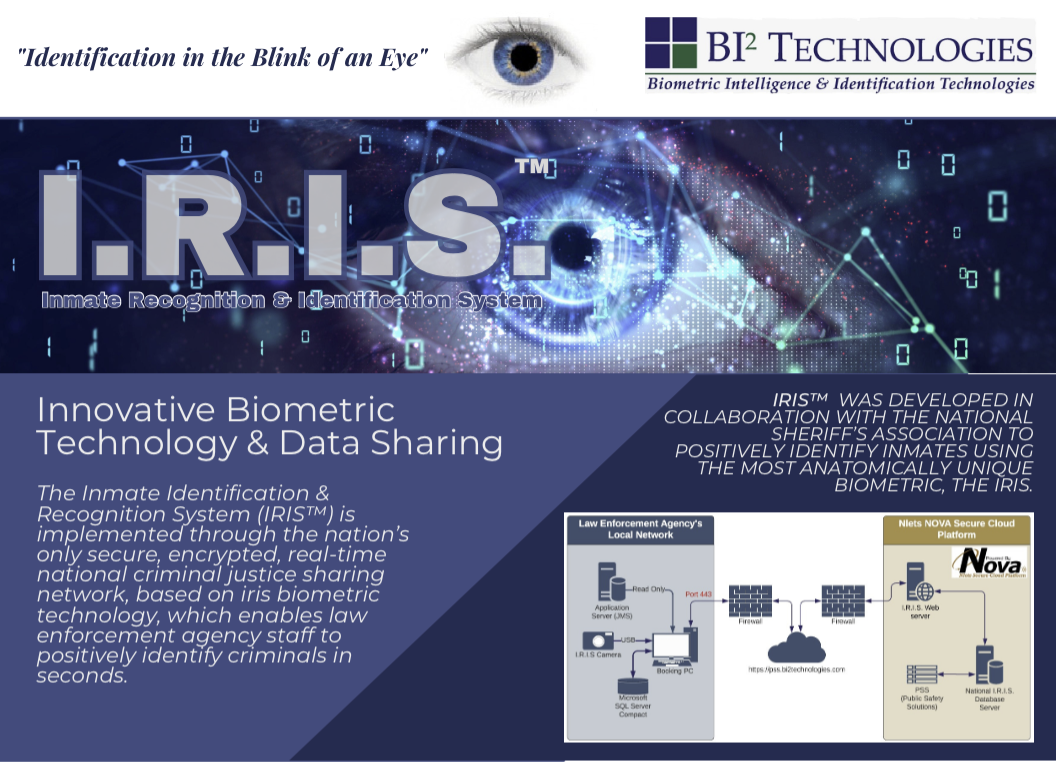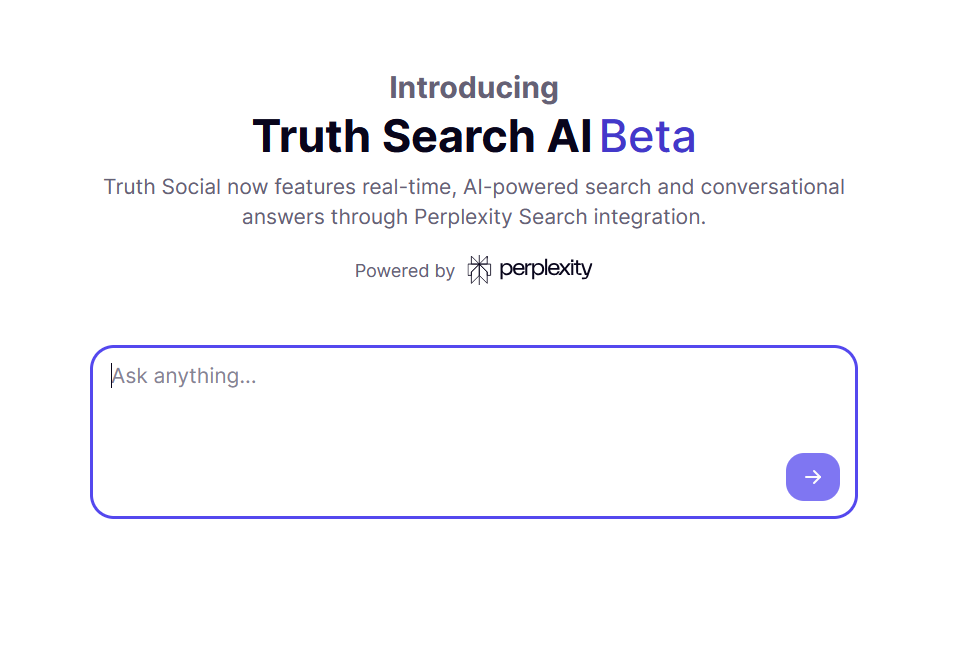A man gave himself bromism, a psychiatric disorder that has not been common for many decades, after asking ChatGPT for advice and accidentally poisoning himself, according to a case study published this week in the Annals of Internal Medicine.
In this case, a man showed up in an ER experiencing auditory and visual hallucinations and claiming that his neighbor was poisoning him. After attempting to escape and being treated for dehydration with fluids and electrolytes, the study reports, he was able to explain that he had put himself on a super-restrictive diet in which he attempted to completely eliminate salt. He had been replacing all the salt in his food with sodium bromide, a controlled substance that is often used as a dog anticonvulsant.
He said that this was based on information gathered from ChatGPT.
“After reading about the negative effects that sodium chloride, or table salt, has on one's health, he was surprised that he could only find literature related to reducing sodium from one's diet. Inspired by his history of studying nutrition in college, he decided to conduct a personal experiment to eliminate chloride from his diet,” the case study reads. “For 3 months, he had replaced sodium chloride with sodium bromide obtained from the internet after consultation with ChatGPT, in which he had read that chloride can be swapped with bromide, though likely for other purposes, such as cleaning.”
The case study was also reported on by Ars Technica.
I was able to recreate a similar example interaction in one question on the morning of August 7th. I asked “what can chloride be replaced with?” and the bot replied “if you’re referring to replacing chloride ions (CI) in salts (like sodium chloride, NaCl), you can often substitute it with other halide ions such as: Sodium Bromide (NaBr): Replacing chloride with bromide.”
The 60-year-old man started doing just that. He spent three weeks in hospital as his psychotic symptoms slowly subsided.
To be fair to the bot, it did go on to ask me “do you have a specific context in mind?” and when I added “in food” it gave me a list of other salty things including MSG and liquid aminos. On the other hand, it did not tell me not to eat sodium bromide.
I tried ChatGPT again with another question that confirmed I was talking about sodium chloride specifically. The bot hedged its bets a bit by saying “yes… in some contexts”. But it failed to point out up top that a big, no 1, primary use case for sodium chloride (table salt) is human consumption.
The case study authors found similar, saying that when they tried to recreate the situation themselves, the bot did not “inquire about why we wanted to know, as we presume a medical professional would do.” There is both anecdotal and clinical evidence that AI can be helpful in a health context. However, this is a case of consulting an LLM for a health topic in a way that a human healthcare professional could have known to investigate further.
Taking the ChatGPT output at face value, the man in the study bought sodium bromide (which, aside from being a dog epilepsy drug, is also a pool cleaner and pesticide) and poisoned himself over the course of three months to the point of “paranoia and auditory and visual hallucinations.”
Bromism is pretty rare in 2025, but it was huge in the 1800s, and a 1930 study found that up to 8% of people admitted to a psychiatric hospital were suffering from it. Bromide began to be regulated by the FDA between 1975 and 1989, which led to a decline in cases of the syndrome.
The case study says that, “based on the timeline of this case, it appears that the patient either consulted ChatGPT 3.5 or 4.0 when considering how he might remove chloride from this diet.”
On Thursday, in a product launch livestream for ChatGPT 5, OpenAI CEO Sam Altman announced an update he called “the best model ever for health," that could put users "more in control of [their] healthcare journey." They announced that the new models will use something called "safe completions" in cases where questions might be ambiguous or harmful. Altman also spoke with an employee of the company and his wife, who’d been diagnosed with cancer, about how they had used ChatGPT to understand diagnostic letters, decide whether she would undergo radiation, and help her be "an active participant in her own care journey".
From 404 Media via this RSS feed

Two members of Congress have launched a formal investigation into automatic license plate reader (ALPR) company Flock and demanded it turn over details of all searches of its national camera network concerning Immigration and Customs Enforcement (ICE), Customs and Border Protection (CBP), and abortions. The move comes after 404 Media revealed that local cops were performing lookups in Flock on behalf of ICE or for immigration enforcement, and that a Texas officer searched cameras nationwide looking for a woman who self-administered an abortion.
The congressional investigation is just the latest impact from those investigations, which have resulted in a wave of similar coverage around the country and Flock making major changes to its platform. The letter announcing the investigation explicitly cites 404 Media’s articles.
Congressman Raja Krishnamoorthi, Ranking Member of the Oversight Subcommittee on Health Care and Financial Services, and Congressman Robert Garcia, Ranking Member of the House Oversight Committee, are asking Flock for a briefing and answers to their questions “To ensure that the public at large cannot be tracked without their knowledge or consent by potentially unaccountable and hostile officials,” the letter reads.
Part of that letter asks for “an account of all National Lookup searches that contain any of the following words, including the date of the search, the location of the search, the collection location for data accessed as part of that search, and the originating entity of the search.” It then specifies ICE, CBP, and “abortion.”
💡Do you work at Flock or know anything else about its technology? I would love to hear from you. Using a non-work device, you can message me securely on Signal at joseph.404 or send me an email at joseph@404media.co.
The letter also asks for voluminous documents concerning Flock’s policies on data access; how many times Flock has blocked a data request; any misuse of its system; and a mass of communications between Flock and law enforcement customers. In a press release, Krishnamoorthi’s office called it “a formal investigation into Flock Group Inc. over its role in enabling invasive surveillance practices that threaten the privacy, safety, and civil liberties of women, immigrants, and other vulnerable Americans.”
404 Media’s investigations were based on “Network Audits” which show what agency searched a set of Flock cameras and for what given reason. Flock’s national lookup feature allows “all law enforcement agencies across the country” who are also opted-in to search an agency’s cameras. For example, the Network Audit for the first ICE-related investigation came from the Danville Police Department in Illinois. This showed other police departments across the U.S. searching Danville’s cameras. The Network Audit was shared with 404 Media with researchers who asked to remain anonymous to avoid retaliation.
The abortion-related investigation was based on Network Audits obtained by Rose Terse and others and shared with 404 Media. In that case, the sheriff from the agency that performed the search told 404 Media the subject’s family was worried for her safety after she self-administered an abortion. Health surveillance experts said they still had concerns with the nationwide search. The reason for the search included in the Network Audit was “had an abortion, search for female.”
In a statement on Thursday Flock told 404 Media “We appreciate the Committee's interest in and attention to the important civil liberties issues surrounding law enforcement use of Flock Safety’s technology to protect communities and make them safer and look forward to responding to this request. As a company founded to achieve those objectives while protecting constitutional rights, we at Flock take these issues extremely seriously and appreciate the opportunity to work with you.”
After 404 Media’s investigations Flock removed a number of states from its national lookup tool. In July, Senator Ron Wyden of Oregon announced an agreement by Flock to block any out-of-state police searches related to abortion or immigration.
From 404 Media via this RSS feed

This article was producedwith support from WIRED.
A couple of years ago, a curious, then-16-year-old hacker named Reynaldo Vasquez-Garcia was on his laptop at his Portland-area high school, seeing what computer systems he could connect to via the Wifi—“using the school network as a lab,” as he puts it—when he spotted a handful of mysterious devices with the identifier “IPVideo Corporation.”
After a closer look and some googling, Garcia figured out that a company by that name was a subsidiary of Motorola, and the devices he’d found in his school seemed to be something called the Halo 3C, a “smart” smoke and vape detection gadget. “They look just like smoke detectors, but they have a whole bunch of features like sensors and stuff,” Garcia says.
As he read more, he was intrigued to learn that the Halo 3C goes beyond detecting smoke and vaping—including a distinct feature for discerning THC vaping in particular. It also has a microphone for listening out for “aggression,” gunshots, and keywords such as someone calling for help, a feature that to Vasquez-Garcia immediately raised concerns of more intrusive surveillance.
From 404 Media via this RSS feed

A Customs and Border Protection (CBP) agent wore Meta’s AI smart glasses to a June 30 immigration raid outside a Home Depot in Cypress Park, Los Angeles, according to photos and videos of the agent verified by 404 Media.
Meta does not have a contract with CBP, and 404 Media was unable to confirm whether or not the agent recorded any video using the smart glasses at the raid. Based on what we know so far, this appears to be a one-off case of an agent either wearing his personal device to an immigration raid, or CBP trying technology on an ad-hoc basis without a formal procurement process. Civil liberties and privacy experts told 404 Media, however, that even on a one-off basis, it signals that law enforcement agents are interested in smart glasses technology and that the wearing of smart glasses in an immigration raid context is highly concerning.
“There’s a nonzero chance the agent bought the Meta smart glasses because they wanted it for themselves and it’s the glasses they like to wear. But even if that’s the case, it’s worth pointing out that there are regulatory things that need to be thought through, and this stuff can trickle down to officers on an individual basis,” Jake Laperruque, deputy director of the Center for Democracy and Technology’s security and surveillance project, told 404 Media. “There needs to be compliance with rules and laws even if a technology is not handed out through the department. The questions around [smart glasses are ones] we’re going to have to grapple with very soon and they’re pretty alarming.”



The glasses were worn by a CBP agent outside of a Home Depot in Cypress Park, Los Angeles during a June 30 immigration raid which happened amid weeks of protests, the deployment of the National Guard and the Marines, and during which immigration enforcement in Los Angeles has become a flashpoint in the Trump administration’s mass deportation campaign and the backlash to it. 404 Media obtained multiple photos and videos of the CBP agent wearing the Meta glasses and verified that the footage and videos were taken outside of the Cypress Park Home Depot during an immigration raid. The agent in the photo is wearing Meta’s Ray Ban AI glasses, a mask, and a CBP uniform and patch. CBP did not respond to multiple requests for comment.
0:00/0:15 1×
In the video, a CBP agent motions to the person filming the video to back up. The Meta Ray Ban AI glasses are clearly visible on the agent’s face.
Meta’s AI smart glasses currently feature a camera, live-streaming capabilities, integration with Meta’s AI assistant, three microphones, and image and scene recognition capabilities through Meta AI. The Information reported that Meta is considering adding facial recognition capabilities to the device, though they do not currently have that functionality. When filming, a recording light on Meta’s smart glasses turns on; in the photos and brief video 404 Media has seen, the light is not on.
Students at Harvard University showed that they can be used in conjunction with off-the-shelf facial recognition tools to identify people in near real time.
💡Do you know anything else about this? I would love to hear from you. Using a non-work device, you can message me securely on Signal at jason.404. Otherwise, send me an email at jason@404media.co.
Multiple experts 404 Media spoke to said that these smart glasses qualify as a body worn camera under the Department of Homeland Security’s and Customs and Border Protection’s video recording policies. CBP’s policy states that “no personally owned devices may be used in lieu of IDVRS [Incident Driven Video Recording Systems] to record law enforcement encounters,” and that “recorded data shall not be downloaded or recorded for personal use or posted onto a personally owned device.” DHS’s policy states “the use of personally owned [Body Worn Cameras] or other video, audio, or digital recording devices to record official law enforcement activities is prohibited.”
Under the Trump administration, however, enforcement of regulations for law enforcement engaging in immigration raids is largely out the window.
“I think it should be seen in the context of an agency that is really encouraging its agents to actively intimidate and terrorize people. Use of cameras can be seen as part of that,” Jay Stanley, a senior policy analyst at the ACLU, told 404 Media. “It’s in line with the masking that we’ve seen, and generally behavior that’s intended to terrorize people, masking failure to identify themselves, failure to wear clear uniforms, smashing windows, etc. A big part of why this is problematic is the utter lack of policy oversight here. If an agent videotapes themselves engaging in abusive activity, are they going to be able to bury that video? Are they going to be able to turn it on and off on the fly or edit it later? There are all kinds of abuses that can happen with these without regulation and enforcement of those regulations, and the prospects of that happening in this administration seem dim.”
When reached for comment, a Meta spokesperson asked 404 Media a series of questions about the framing of the article, and stressed that Meta does not have any contract with CBP. They then asked why Meta would be mentioned in the article at all: “I’m curious if you can explain why it is Meta will be mentioned by name in this piece when in previous 404 reporting regarding ICE facial recognition app and follow up reporting the term ‘smartphones’ or ‘phone’ is used despite ICE agents clearly using Apple iPhones and Android devices,” they said. Meta ultimately declined to comment for this story.
Meta also recently signed a partnership deal with defense contractor Anduril to offer AI, augmented reality, and virtual reality capabilities to the military through Meta’s Reality Labs division, which also makes the Meta smart glasses (though it is unclear what form this technology will take or what its capabilities will be). Earlier this year, Meta relaxed its content moderation policies on hate speech regarding the dehumanization of immigrants, and last month Meta’s CTO Andrew Bosworth was named an Army Reserve Lt. Colonel by the Trump administration.
“Meta has spent the last decade building AI and AR to enable the computing platform of the future,” Meta CEO Mark Zuckerberg said in a press release announcing the deal with Anduril. “We’re proud to partner with Anduril to help bring these technologies to the American servicemembers that protect our interests at home and abroad.”
“My mission has long been to turn warfighters into technomancers, and the products we are building with Meta do just that,” Anduril founder Palmer Luckey said in the press release.
In a recent earnings call, Zuckerberg said he believes smart glasses will become the primary way people interact with AI. “I think in the future, if you don’t have glasses that have AI or some way to interact with AI, I think you’re kind of similarly, probably [will] be at a pretty significant cognitive disadvantage compared to other people and who you’re working with, or competing against,” he said during the call. “That’s also going to unlock a lot of value where you can just interact with an AI system throughout the day in this multimodal way. It can see the content around you, it can generate a UI for you, show you information and be helpful.”
Immigrations and Customs Enforcement has recently gained access to a new facial recognition smartphone app called Mobile Fortify that is connected to several massive government databases, showing that DHS is interested in facial recognition tech.
Privacy and civil liberties experts told 404 Media that this broader context—with Meta heavily marketing its smart glasses while simultaneously getting into military contracting, and the Department of Homeland Security increasingly interested in facial recognition—means that seeing a CBP agent wearing Meta AI glasses in the field is alarming.
“Regardless of whether this was a personal choice by this agent or whether somehow CBP facilitated the use of these meta glasses, the fact that it was worn by this agent is disturbing,” Jeramie Scott, senior counsel and director of the Electronic Information Privacy Center told 404 Media. “Having this type of technology on a law enforcement agent starts heading toward the tactics of authoritarian governments who love to use facial recognition to try to suppress opposition.”
The fact is that Meta is at the forefront of popularizing smart glasses, which are not yet a widely adopted technology. The privacy practices and functionality of the glasses is, at the moment, largely being guided by Meta, whereas smartphones are a largely commodified technology at this point. And it’s clear that this consumer technology that the company markets on billboards as a cool way to record videos for Instagram is seen by some in law enforcement as enticing.
“It’s clear that whatever imaginary boundary there was between consumer surveillance tech and government surveillance tech is now completely erased,” Chris Gilliard, co-director of The Critical Internet Studies Institute and author of the forthcoming book Luxury Surveillance, told 404 Media.
“The fact is when you bring powerful new surveillance capabilities into the marketplace, they can be used for a range of purposes including abusive ones. And that needs to be thought through before you bring things like that into the marketplace,” the ACLU’s Stanley said.
Laperruque, of the CDT, said perhaps we should think about Meta smart glasses in the same way we think about other body cameras: “On the one hand, there’s a big difference between glasses with a computer built into them and a pair of Oakleys,” he said. “They’re not the only ones who make cameras you attach to your body. On the other hand, if that’s going to be the comparison, then let’s talk about this in the context of companies like Axon and other body-worn cameras.”
From 404 Media via this RSS feed

Some of the first reviews ever written for the original Legend of Zelda and Super Mario Bros. have been digitized and published by the Video Game History Foundation. The reviews appeared in Computer Entertainer, an early video game magazine that ran from 1982 to 1990. The archivists at the Foundation tracked down the magazine’s entire run and have published it all online under a Creative Commons license.
Computer Entertainer has a fascinating history. It was one of the only magazines to cover video games during the market crash of the mid 1980s. “Simply put, there weren't other video game magazines in this era, at least in the United States,” Phil Salvador, the Library Director at the VGHF, told 404 Media. “In many cases, this is the only American coverage we have for this period.”
“If we want to understand video game history, we need more than the games themselves. We need to understand how they were talked about and how they were made. Primary sources from the early years of the video game industry like Computer Entertainer are scarce. They give us insight into the story of video games that there's no way to reproduce,” Salvador said.
 Image via VGHF.
Image via VGHF.
Computer Entertainer was the newsletter for the Video Take-Out, a company that sold video games through the mail. “Because they were focused on retail products, they kept on top of the video game release calendar in a way that no other enthusiast magazine did in the 1980s,” Salvador said. “This magazine is one of the only reliable sources of American release dates for computer and console games during this era. Look up any console game from the 1980s on Wikipedia, and chances are, the American release date in the article comes from Computer Entertainer.”
Digging through the archives, I found the original Legend of Zelda review and read through a year’s worth of hype and handwringing leading up to its release. Computer Entertainer was on hand at CES to talk to the unproven Nintendo in February 1987. Zelda was already out in Japan, where it ran on the disk-based Famicom system.
The CE write-up noted that the NES was a cartridge system and that Nintendo had to make unheard of adjustments to make the game work right. “A Nintendo spokesperson told us that they have included a lithium battery with a 5-year life span in the cartridge to allow it to save information you need, so the disk drive is not needed,” CE wrote.
 Image via VGHF.
Image via VGHF.
Convincing Americans to buy a Famicom-style disk drive after they’d already bought the NES was thought to be a hard sell. “We do feel, however, that it is just a question of time before Nintendo introduces the disk drive in the U.S,” CE said. “Also, for the avid long-term gamer (count all our raiders in that category!), the 5-year battery could prove frustrating as, when the battery dies, so does all the character information that has been stored on the cartridge.” CE needn’t have worried. Many of those batteries are still working today, almost 40 years later, and there’s a robust aftermarket in replacement parts when they fail.
Legend of Zelda finally came out in August of 1987 and CE gave it a glowing review, rating it 3.5 out of 4 stars. In the same issue, it gave Leisure Suit Larry and the Land of the Lounge Lizards a perfect 4 out of 4 stars. “There’s certainly no socially redeeming value to the game, which is what makes it so much fun,” CE said of the adventure game that would have nowhere near the cultural or social impact of Link and Zelda.
 Image via VGHF.
Image via VGHF.
“It's a totally different perspective to see someone trying to wrap their head around the original Super Mario Bros., or expressing skepticism about the idea of Nintendo selling a game console in the United States,” Salvador said.
The 1980s was a different era of games writing. “[Computer Entertainer] covered video and computer games as a function of their retail business to help customers better understand the game market,” Salvador said. “Being able to look back on what retailers thought about the game business back in the 1980s is a huge historical boon, but today, there's understandably more questions about the role of game criticism. Does it still make sense to cover games the same way Computer Entertainer did 40 years ago?”
From 404 Media via this RSS feed

A researcher has found that more than 130,000 conversations with AI chatbots including Claude, Grok, ChatGPT, and others are discoverable on the Internet Archive, highlighting how peoples’ interactions with LLMs may be publicly archived if users are not careful with the sharing settings they may enable.
The news follows earlier findings that Google was indexing ChatGPT conversations that users had set to share, despite potentially not understanding that these chats were now viewable by anyone, and not just those they intended to share the chats with. OpenAI had also not taken steps to ensure these conversations could be indexed by Google.
“I obtained URLs for: Grok, Mistral, Qwen, Claude, and Copilot,” the researcher, who goes by the handle dead1nfluence, told 404 Media. They also found material related to ChatGPT, but said “OpenAI has had the ChatGPT[.]com/share links removed it seems.” Searching on the Internet Archive now for ChatGPT share links does not return any results, while Grok results, for example, are still available.
Dead1nfluence wrote a blog post about some of their findings on Sunday and shared the list of more than 130,000 archived LLM chat links with 404 Media. They also shared some of the contents of those chats that they had scraped. Dead1nfluence wrote that they found API keys and other exposed information that could be useful to a hacker.
“While these providers do tell their users that the shared links are public to anyone, I think that most who have used this feature would not have expected that these links could be findable by anyone, and certainly not indexed and readily available for others to view,” dead1nfluence wrote in their blog post. “This could prove to be a very valuable data source for attackers and red teamers alike. With this, I can now search the dataset at any time for target companies to see if employees may have disclosed sensitive information by accident.”
404 Media verified some of dead1influence’s findings by discovering specific material they flagged in the dataset, then going to the still-public LLM link and checking the content.
💡Do you know anything else about this? I would love to hear from you. Using a non-work device, you can message me securely on Signal at joseph.404 or send me an email at joseph@404media.co.
Most of the companies whose AI tools are included in the dataset did not respond to a request for comment. Microsoft which owns Copilot acknowledged a request for comment but didn't provide a response in time for publication. A spokesperson for Anthrophic, which owns Claude, told 404 Media: “We give people control over sharing their Claude conversations publicly, and in keeping with our privacy principles, we do not share chat directories or sitemaps with search engines like Google. These shareable links are not guessable or discoverable unless people choose to publicize them themselves. When someone shares a conversation, they are making that content publicly accessible, and like other public web content, it may be archived by third-party services. In our review of the sample archived conversations shared with us, these were either manually requested to be indexed by a person with access to the link or submitted by independent archivist organizations who discovered the URLs after they were published elsewhere across the internet first.” 404 Media only shared a small sample of the Claude links with Anthrophic, not the entire list.
Fast Company first reported that Google was indexing some ChatGPT conversations on July 30. This was because of a sharing feature ChatGPT had that allowed users to send a link to a ChatGPT conversation to someone else. OpenAI disabled the sharing feature in response. OpenAI CISO Dane Stuckey said in a previous statement sent to 404 Media: “This was a short-lived experiment to help people discover useful conversations. This feature required users to opt-in, first by picking a chat to share, then by clicking a checkbox for it to be shared with search engines.”
A researcher who requested anonymity gave 404 Media access to a dataset of nearly 100,000 ChatGPT conversations indexed on Google. 404 Media found those included the alleged texts of non-disclosure agreements, discussions of confidential contracts, and people trying to use ChatGPT for relationship issues.
Others also found that the Internet Archive contained archived LLM chats.
From 404 Media via this RSS feed

Immigration and Customs Enforcement (ICE) is looking to buy iris scanning technology that its manufacturer says can identify known persons “in seconds from virtually anywhere,” according to newly published procurement documents.
Originally designed to be used by sheriff departments to identify inmates or other known persons, ICE is now likely buying the technology specifically for its Enforcement and Removal Operations (ERO) section, which focuses on deportations.
“This one-of-a-kind system allows sheriffs and other law enforcement agencies to quickly authenticate the identity of the person in their custody and provides record information from other jurisdictions across the country once the offender is registered in the system,” a brochure for one of the technology products, called the Mobile Offender Recognition & Identification System, or MORIS, reads. The procurement documents say ICE is also seeking to buy access to the Inmate Recognition & Identification System, or I.R.I.S., and marketing material available online says the two work in tandem with one another. I.R.I.S. claims to be the “only national, web-based iris biometric network” in that material.
💡Do you know anything else about this technology, or others being used by ICE? I would love to hear from you. Using a non-work device, you can message me securely on Signal at joseph.404 or send me an email at joseph@404media.co.
Both products are made by BI2 Technologies, a company based in Massachusetts. Neither BI2 or DHS responded to a request for comment.
On Wednesday ICE posted an announcement saying it intended to award a sole source purchase order to BI2 for licenses to both I.R.I.S and MORIS. According to BI2 marketing material, MORIS is available on Apple and Android devices. That material says it can identify an offender already enrolled in a national database.


Screenshot from BI2 marketing material.
“The Inmate Identification and Recognition System (I.R.I.S.™) positively identifies offenders using the most anatomically unique biometric—the iris,” a page on BI2’s website reads. It says that Sheriff’s Offices have been using I.R.I.S for making arrests, inmate intaking and booking, releasing inmates, and authenticating an individual. “At the root of iris recognition’s accuracy is the data-richness of the iris itself. The I.R.I.S.™ system captures over 265 points of unique characteristics in formulating its algorithmic template,” the website adds.
BI2’s system connects to multiple databases according to previous media reports, including the Sex Offender Registry and Identification System, Child Project, Senior Safety Net (a registry used to identify enrolled seniors who may be lost due to dementia) and I.R.I.S. itself.
In a 2017 press release, Sean G. Mullin, president of BI2 Technologies, said the company’s technology “will provide each Sheriff with immediate access to national, state and local criminal justice and law enforcement databases. This will enable Sheriff’s staff to positively identify previously enrolled individuals in seconds, regardless of the often fraudulent identity presented.”
This appears to be BI2’s first contract with ICE, according to federal procurement databases. An ICE source also said they had never heard of ICE working with BI2. 404 Media granted the source anonymity because they weren’t permitted to speak to the press.
404 Media previously reported on Mobile Fortify, a new ICE facial recognition app that officials can install on their work issued phones which queries a wealth of state and federal databases at once to reveal someone’s identity and whether they had been marked for deportation. That included images collected by Customs and Border Protection (CBP) when people enter or exit the United States.
From 404 Media via this RSS feed

Donald Trump’s media company is teaming up with Perplexity to bring AI search to Truth Social, the President’s X.com alternative.
Truth announced the endeavor in a press release on Wednesday. Anyone using the browser version of Truth can now use Perplexity to search the web. “We’re proud to partner with Perplexity to launch our public Beta testing of Truth Social AI, which will make Truth Social an even more vital element in the Patriot Economy,” Devin Nunes, Trump Media's CEO and Chair of the President's Intelligence Advisory Board, said in the press release.
“We’re excited to partner with Truth Social to bring powerful AI to an audience with important questions. Curiosity is the engine of change, and Perplexity’s AI is developed to empower curiosity by delivering direct, reliable answers with transparent citations that allow anyone to dig deeper,” Perplexity’s chief business officer Dmitry Shevelenko said in the press release.
According to the announcement, “the mission of Trump Media is to end Big Tech’s assault on free speech by opening up the Internet and giving people their voices back.” Which is a funny thing to put in an announcement about Trump partnering with a company whose investors include Jeff Bezos, Nvidia, and the former CEO of GitHub.
Perplexity’s Truth Social search engine will be powered by stolen content. Earlier this week, Cloudflare reported Perplexity used stealth and undeclared crawlers to evade websites that explicitly set themselves up to avoid being catalogued by LLMs. Perplexity has a long history of using scrapers that ignore the Robots Exclusion Protocol. Perplexity started as a demo that scraped Twitter with fake academic accounts backed by AI-generated research proposals.
Forbes, the New York Times, New York Post, and the Dow Jones have all accused Perplexity of plagiarism. News Corp‘s Dow Jones & Co., publisher of the Wall Street Journal, and the New York Post sued Perplexity in 2024 for copyright infringement, claiming in the federal lawsuit that Perplexity is “engaging in a massive amount of illegal copying of publishers’ copyrighted works and diverting customers and critical revenues away from those copyright holders.” In 2024, WIRED reported on the accusations of Perplexity’s plagiarism and Perplexity almost immediately plagiarized the story. When New York Times tech workers went on strike last year, Perplexity CEO Aravind Srinivas offered to help the Times keep the paper going.
Big Tech has aligned itself with the Trump administration since before the election, seeing an alliance of opportunity for deregulation of AI in particular.
But is the Perplexity-powered AI aggregation machine “woke?” I asked a few questions to find out. I wanted to know: Is Trump in the Epstein files?“There is no evidence in the recently reviewed and released government ‘Epstein Files’ of a ‘client list” or documentation placing Donald Trump as implicated in Jeffrey Epstein's criminal actions,” it said. “While Trump’s name, like many other prominent individuals, appears in public records of Epstein’s social and business contacts (such as guest lists or flight logs, widely reported over the years), there is no mention in current official documents or filings that directly implicates Trump as a criminal participant in Epstein’s sex trafficking activities.”
How does Truth Social’s search engine think the American economy is doing?
“The American economy is currently facing significant headwinds, with signs of slowdown—most notably by a contraction in GDP, rising inflation, and softening labor market conditions—though some leaders still emphasize areas of resilience,” Truth Search AI said.
Are the tariffs to blame?“Recent tariff increases in the United States have generally had a negative effect on economic growth and employment, raising costs for businesses and consumers while providing only limited benefits to some manufacturing sectors,” Truth Search AI said.
Damn. It’s woke as hell.
From 404 Media via this RSS feed
Subscribe
Join the newsletter to get the latest updates.
SuccessGreat! Check your inbox and click the link.ErrorPlease enter a valid email address.

Hundreds of AI-powered automated license plate reading cameras paid for by Lowe’s and Home Depot and stationed in the hardware stores’ parking lots are being fed into a massive surveillance system that law enforcement can access, according to records obtained using a public records request.
The records, obtained from the Johnson County, Texas Sheriff’s Office by the Electronic Frontier Foundation (EFF) and shared with 404 Media, show the sheriff’s office is able to tap into Flock license plate reading cameras at 173 different Lowe’s locations around the U.S. and that it can tap into cameras and gunshot-detecting microphones at dozens of Home Depot stores within Texas. The records are the latest to shed light on how expansive Flock’s surveillance network has become, and highlights that it includes cameras that are operated by both police and private businesses.
“What we're learning is that two of the country's most popular home improvement stores are contributing to the massive surveillance dragnet coordinated by Flock Safety,” Dave Maass, director of investigations at the Electronic Frontier Foundation, told 404 Media. “Do customers know that these stores are collecting their data and sharing indiscriminately? Probably not. Have these companies given thought about how this data might put their customers in danger, whether it's cops stalking their exes or aggressive ICE agents targeting yard workers? Probably not. If these companies want customers to feel safe in their homes, then they should make sure they're also safe where they buy their supplies."
Flock’s automated license plate reader (ALPR) cameras are stationed along roads or at entrances to parking lots around the United States, and constantly scan the license plates of cars that drive by. Because there are Flock cameras around the country, Flock often has a snapshot of people’s movements which police can search, typically without a warrant.
Government agencies that have Flock cameras can choose to contribute their data to either a statewide or nationwide network, meaning cops around the state or country can access them. Flock told 404 Media that Flock cameras operated by private companies have more restrictive sharing options.
From 404 Media via this RSS feed
Congress’ website for the U.S. Constitution was changed to delete the last two sections of Article I, which include provisions such as habeas corpus, forbidding the naming of titles of nobility, and forbidding foreign emoluments for U.S. officials.
The last full version of the webpage, archived by the Internet Archive on July 17, still included the now-deleted sections. Parts of Section 8 of Article I, as well as all of Sections 9 and 10 of Article I are now gone from the live site. The deletions, as of August 6, are also archived here. The change was spotted by users on Lemmy, an open-source aggregation platform and forum.
💡Do you know anything else about what happened to this webpage, or web admin under the Trump administration in general? I would love to hear from you. Using a non-work device, you can message me securely on Signal at sam.404. Otherwise, send me an email at sam@404media.co.
This webpage, maintained by the U.S. government, hasn’t changed significantly in the entire time it’s been saved by the Internet Archive’s Wayback Machine—since 2019. The page for the Constitution on the National Archives website remains unchanged, and shows the entire document.
From 404 Media via this RSS feed

Scientists have discovered million-year-old artifacts made by a mysterious group of early humans on the Indonesian island of Sulawesi, according to a breakthrough study published on Wednesday in Nature.
The extraordinary find pushes the archaeological record of Sulawesi back by about 800,000 years, and confirms that hominins, the broader family to which humans belong, crossed treacherous ocean passages to reach the island, where they crafted simple tools.
The tool-makers may have been related to a group of archaic humans—nicknamed “hobbits” for their short stature—that lived on nearby Flores Island. But while the hobbits left behind skeletal remains, no fossils from the Sulawesi group have been unearthed. The tools, found at a site called Calio in South Sulawesi, are the only record of their existence for now.
“The discovery of these ancient stone tools at Calio is another important piece of the puzzle in our understanding of the movements of early hominins from the edge of the Asian landmass into the isolated zone of islands known as Wallacea,” said Adam Brumm, a professor of archaeology at Griffith University and a co-author of the new study, in an email.
“A major question remaining is the identity of the archaic humans of Sulawesi,” he added, noting that they might be Homo erectus, or descendents of this influential early human species that migrated from Africa to Asia. ”But until we have their fossils, who they were will remain a mystery.”
 Stone tools dated to over 1.04 million-years-old, scale bars are 10mm. Image: M W Moore
Stone tools dated to over 1.04 million-years-old, scale bars are 10mm. Image: M W Moore
The discovery was made by Budianto “Budi” Hakim, an Indonesian archaeologist who has spent decades searching for traces of archaic humans in Sulawesi. Hakim spotted one of the artifacts while scouring the region’s sandstone outcrops, prompting an excavation that unearthed a total of seven flaked tools crafted from chert rock. The remains of extinct elephants and pigs were also found in the sedimentary layers at the site, hinting at an ancient origin.
The team used two independent methods to date the tools, both of which placed their age at a minimum of 1.04 million years old, making the artifacts the earliest evidence for hominin occupation of Sulawesi by far.
“Budi has been searching for this evidence for much of his life, so it is very exciting indeed,” said Brumm. “But it is not so surprising that we now have evidence for hominins on Sulawesi by one million years ago; we have long suspected that there had been a very deep history of human occupation of this island based on the discovery (in 2010) of stone tools on Flores to the south that date to at least a million years ago. Sulawesi was probably where the first hominins to set foot on Flores actually came from, so it made sense to us that the human presence on Sulawesi would go back at least as far as a million years, if not considerably earlier.”
“And personally, it did not surprise me that Budi unearthed this new find,” he continued. “He is a renowned figure in Indonesian archaeology and undoubtedly has the ‘golden touch.’”
The tools are sharp-edged flakes that were probably cut from larger rocks obtained from a nearby river channel. Like many tools made by hominins across time and regions, they would have been useful for cutting and scraping materials, though their exact purpose is unknown.
The tools “can’t tell us very much about the behaviour or cognitive capacities of these early humans, other than that they were tool-makers who clearly understood how to choose stones with suitable properties and to fracture them in a controlled way to produce a supply of usable tools,” explained Brumm. “Over the past 2.5 million years, many different hominin species (including our own, Homo sapiens) have made stone tools that are essentially indistinguishable from the Sulawesi tools.”
In addition to their mysterious identity, it is unclear how these early humans crossed ocean waters to reach these island shores, given that the shortest distance between the Asian mainland and Sulawesi would have been 30 miles, at minimum.
“This is too far to swim (in any case the ocean currents are too strong),” Brumm explained. “It is also very unlikely these archaic hominins had the cognitive ability to develop watercraft that were capable of making sea voyages, or indeed of the advanced planning required to gather resources and set sail over the horizon to an unseen land.”
“Most likely, they crossed to Sulawesi from the Asian mainland in the same way rodents and monkeys are suspected to have done; that is, by accident, perhaps as castaways on natural ‘rafts’ of floating vegetation,” he concluded.
It’s incredible to imagine these early humans getting caught up in tides or currents, perhaps stranded at sea for days, only to serendipitously wash up on a vast island that would become home to untold generations. Hakim, Brumm, and their colleagues hope to find more evidence of this long-lost population in the coming years, but for now, the stone tools offer a rare window into the lives of these accidental seafarers and their descendants.
From 404 Media via this RSS feed


